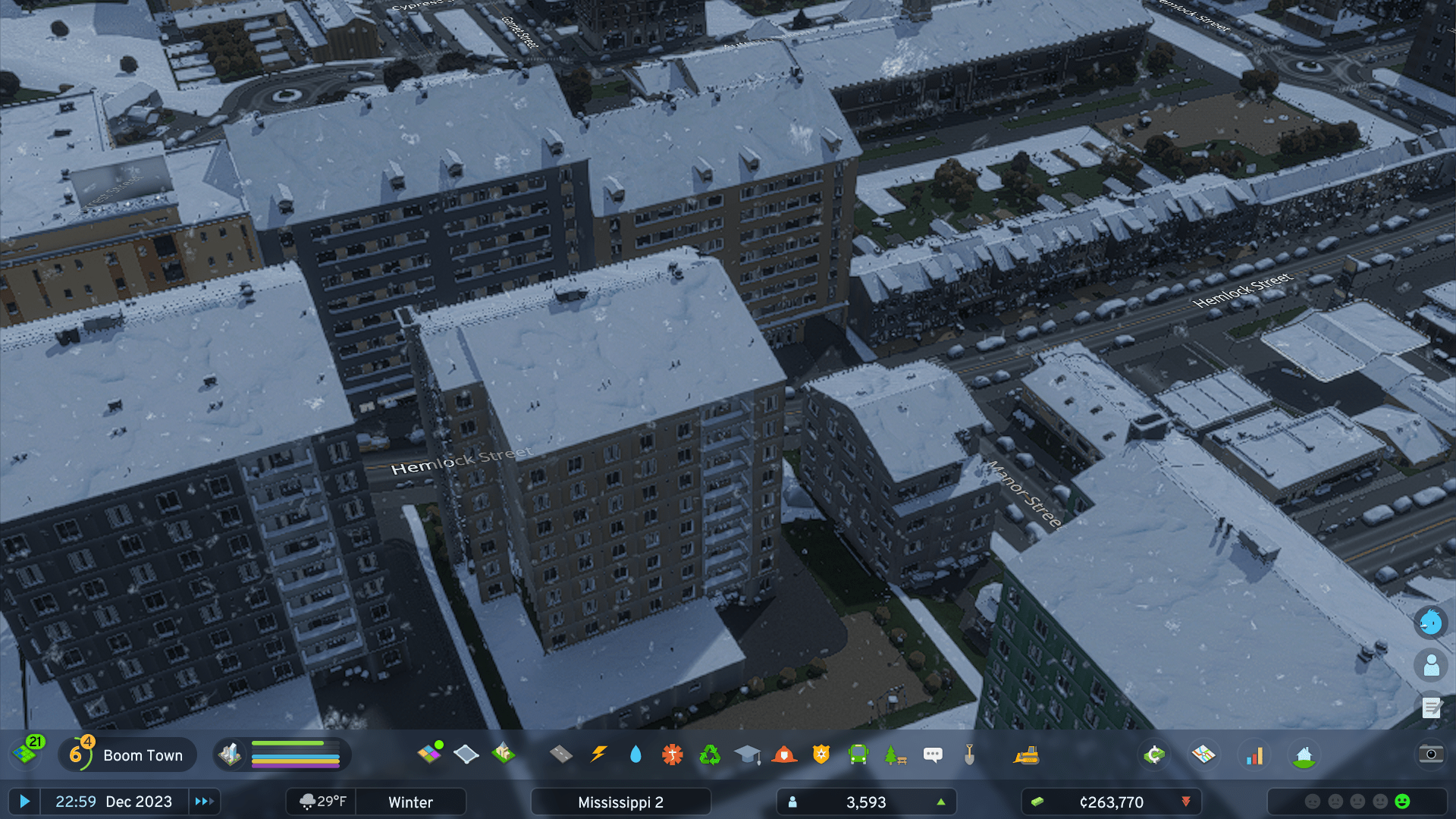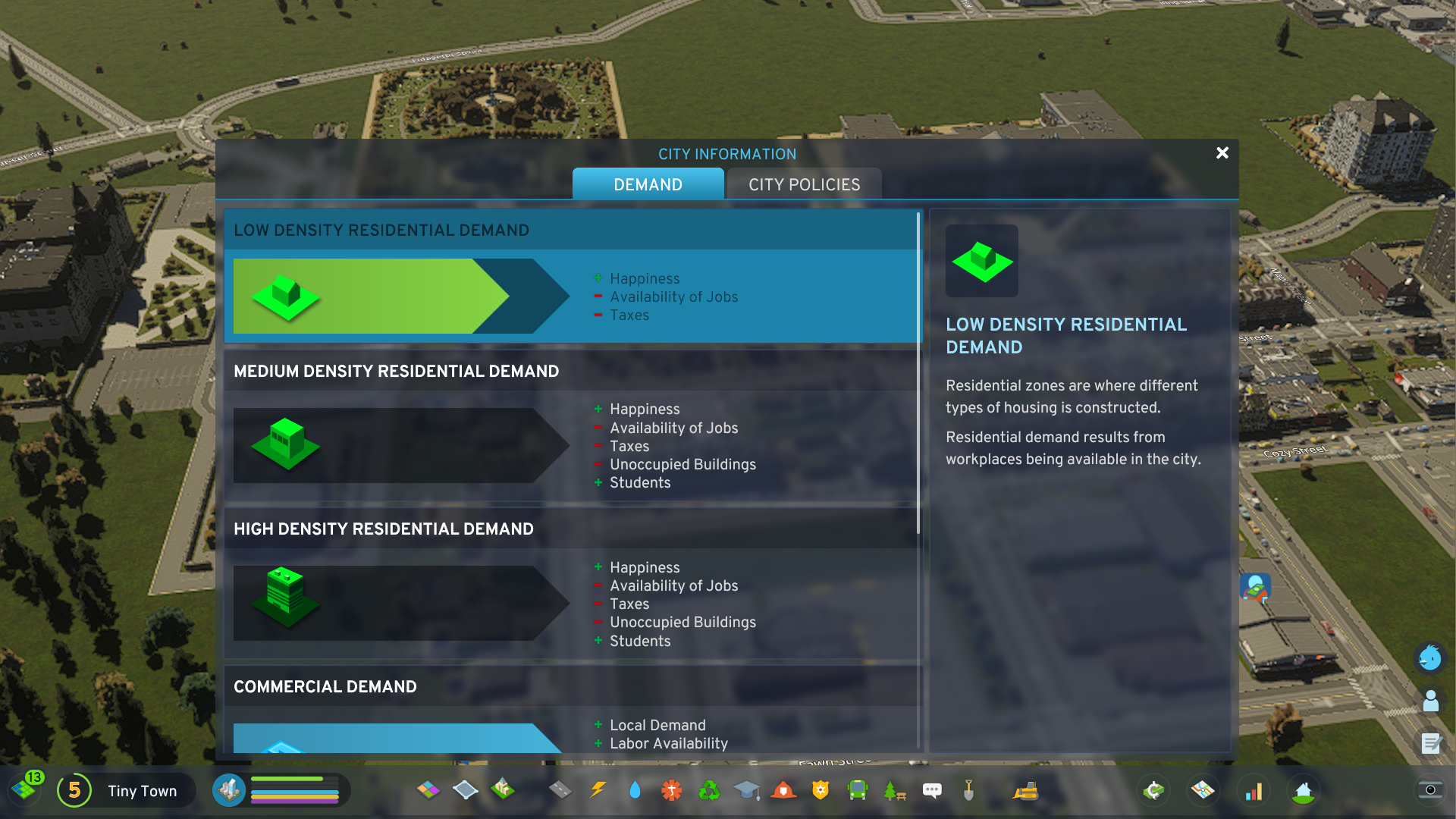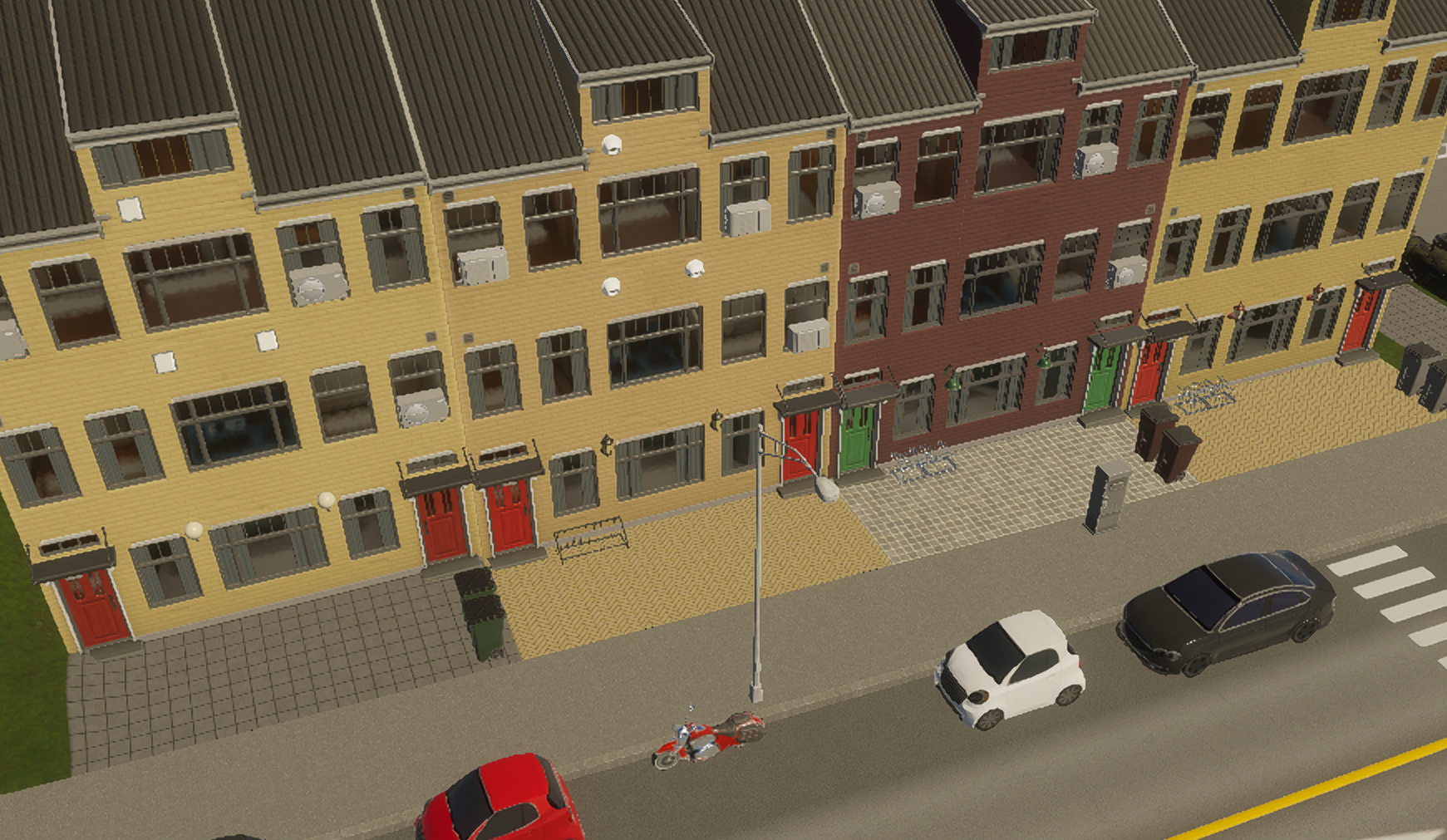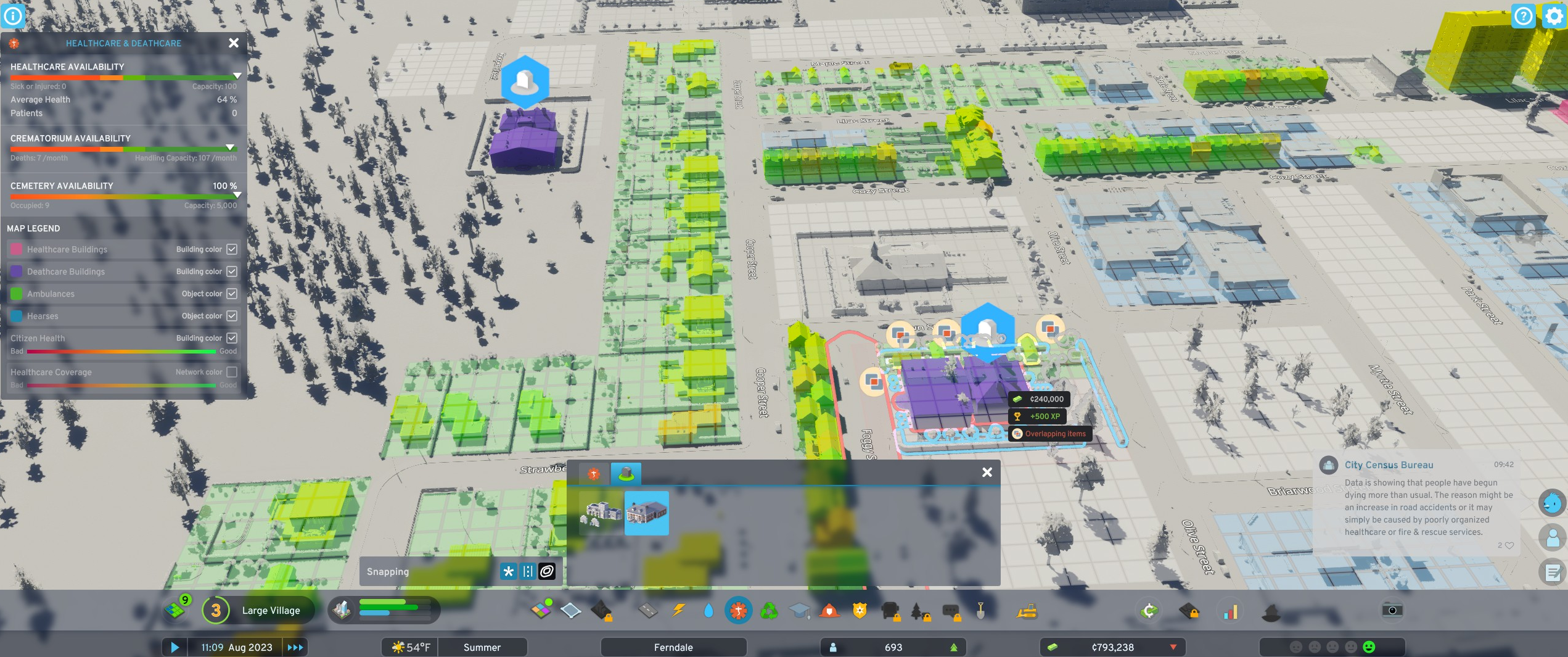It’s hard to tell when you’re done with a game like Cities: Skylines 2. I’ve got a habit of playing anything with a similar hook until I hate it. It’s typically weeks upon weeks of fascination, and then I drop it when I’ve exhausted every point of novelty backward and forwards. It’s not my usual habit, but when I find a sim, a survival game, an MMO, or something of that nature, and it just clicks, that’s usually my go-to for a while.
I find there’s a lot of that pull in most games even tangentially related, whether it’s the building mechanics in Valheim or the budgeting of another Theme Park sim. If you ask me where you’ll find Cities: Skylines 2 on my scale of teeth-grinding fury to infinitely satisfying, it’s hard to say right now. It’s somewhere at the intersection of tedium and delight — at any given moment, I can’t tell if I’m more frustrated or charmed by its sea of menus, alerts, and tools.
In its current state, Cities certainly has its problems, most of which involve performance. Developer Colossal Order has been upfront about as much, and for the purposes of my review, I’ve played two builds. This latest one I’ve gotten pretty recently, so I can’t speak to the game as a whole, but I can share my experience thus far until I work out a final perspective.

Cities Skylines 2 (PC [Reviewed], Xbox Series X|S, PlayStation 5)
Developer: Colossal Order
Publisher: Paradox Interactive
Released: October 24, 2023
MSRP: $49.99
Zoned for improvements
Perhaps you’ve inferred as much from the screenshots, but I’m no civil engineer. I do, however, get a real kick out of perfectly lining up tiles in Cities: Skylines 2. I like zoning off new buildings for construction, eagerly waiting to see what type of business pops up from my random selection of tiles. It’s usually followed by a whirr of satisfaction as my little town — lovingly named Mississippi 2 — acknowledges I’ve yet again met the citizens’ needs. I named it after my home state; the two is there because I probably should’ve built more storm shelters in the first one. I abandoned it at the first sign of bad weather and no funds. True to its namesake, at least.
Anyway, that’s how all of my games start, and it’s easy enough to focus on a budding little corner of the map as Cities gets rolling. I use the City Information meters in the lower left to tell me how things are going at a glance, while clicking the menu delivers a more detailed report. A lot of the menus in the sequel are familiar, improved versions of what fans of the original building sim already know, but this one gets more in the weeds while remaining easy to read. Instead of a vague “we need residential buildings,” my citizens explain exactly what types of housing they’re looking for.

That’s part of the balancing act — the things I adore about the sim so easily become what I hate. I spent what felt like forever in tutorial after tutorial, with most of those things never really clicking until I was actually doing them. If you’re already just vaguely familiar with the first, it shouldn’t be a problem, but if this is your first god-mayor gig, just prepare for a hefty learning curve. Cities: Skylines 2 is not really good at teaching you how to play, but when you get it, there’s plenty of pride and satisfaction to unlock hidden behind the game’s Milestone and Development reward trees.
The pitfalls of perfection
In the trial and error phase, I’m sure I made enough little towns to start my own disastrously run country, but that’s part of the fun in getting it just right. Cities offers to let you build with unlimited funds and everything unlocked from the jump, but I prefer the highs and lows of burning my world down through poor budgeting before building it right back up. Taking those lessons learned from one community right into another and in the next, so maybe instead of going broke at the Busy Town rank, I make it to Metropolis instead.
And while the journey between Milestones is mostly driven by the little dings of satisfaction and figuring out the formula, the tools to make it work feel a bit finicky. I don’t mind the 30-something infographics in the corner, reporting on everything from sewage systems to tourism. What I do mind is that my road tools, seemingly for no reason, decide they can’t make the elevation leap from point A to point B, even when I’ve conquered less complex designs elsewhere on the map. All of my furious clicking doesn’t seem to indicate, “I don’t know what you’re colliding with, but just pave over it.”
I don’t like building on slopes; that one’s definitely in the annoying pile. I found ways to work around that obstacle, though. When I start a new city, I typically flatten the whole damn thing out with the Terrain Tool, and so far, at least, that one is fairly easy to use, considering the nature of it. It saves me a lot of headaches later, and as I buy up surrounding tiles to expand my city, it’s easy enough to gently slope up or down to any new zones and connect them. But if you’re a visitor in the great, sprawling metropolis of Mississippi 2, Coerthas, or Mt. Destructoid, don’t laugh at my very flat, very obvious starter tile.
Most of the customization frustrates me; the limited look and feel of building types lose their appeal when it’s the same hospital shape or bus terminal for the millionth time. I reckon that’s a lot of my longing for mods, and though I didn’t play the first as much as other sims, I was a fan of how involved and creative the Cities: Skylines scene for user-made content is.

I’m still trying to get a feel for exports and imports. One of my latest adventures involved making a rather conservative rail system to help my city as the population really took off, but the flow of cargo facilitated by shiny new trains didn’t seem to make much of a dent in growth. My city quickly floundered, despite how careful I thought I’d been, and though I kept cranking down service costs, pausing some operations, and completely cut expansion, I couldn’t tell you why my rail system bled money so fast. Just as the tutorial advised, I dropped it in close to a neighboring city’s line with the hopes of paving the way to a new trade route, but I would’ve been better off not spending hours tinkering with the perfect setup.
Instead, I’d advise most people to keep making new, messy cities over and over until they nail the formula. As it is, clunky systems and their complexities are miserable if you’ve spent too much time invested in the perfect road curve or park placement. It’s easy to become fixated on those things, but not worth the effort until you’ve learned what’s supposed to happen.
It’s a construction zone
Ultimately, what I’m getting to is, just like the appeal in the first, there’s a delicate place to balance just how frustrating some of these city-building tasks can be before they’re more of a bummer, but I do find in this latest build, there’s a little improvement. Many of my frustrations seem to stem from stability and performance, leaving little patience for any clunky, early tool woes. The first build crashed on me quite a bit, but calmed down after cranking all of the settings down to low.

This new update doesn’t break in the same ways, but my Level of Detail is still set to Very Low at the request of the developer. I’ve been tinkering with the settings on my own, but there’s not much that seems to make it look better for now. Usually, my city looks a bit smudged or blocky, but those are the things I care less about; I just want to build. If you’re eager to play around in the photo mode though, that’s not great.
Regardless of the ugliness, there’s still promise there, and I’m into the loop enough that it compels me to push further. Just last night, I was Googling city plans, trying to make heads or tails of how those things work like I’m qualified or something. Obviously, that career has yet to pan out. For now, Cities: Skylines 2 feels like something that needs more time than anything. The options, customization, and fine-tuning tools dampen the experience, but they’re all obstacles that feel manageable. Worst comes to worst, I’ll probably turn to the modding scene once it gets going, but my hope is that Colossal Order cleans up the bones of it for a smoother launch experience.













Published: Oct 19, 2023 12:33 pm